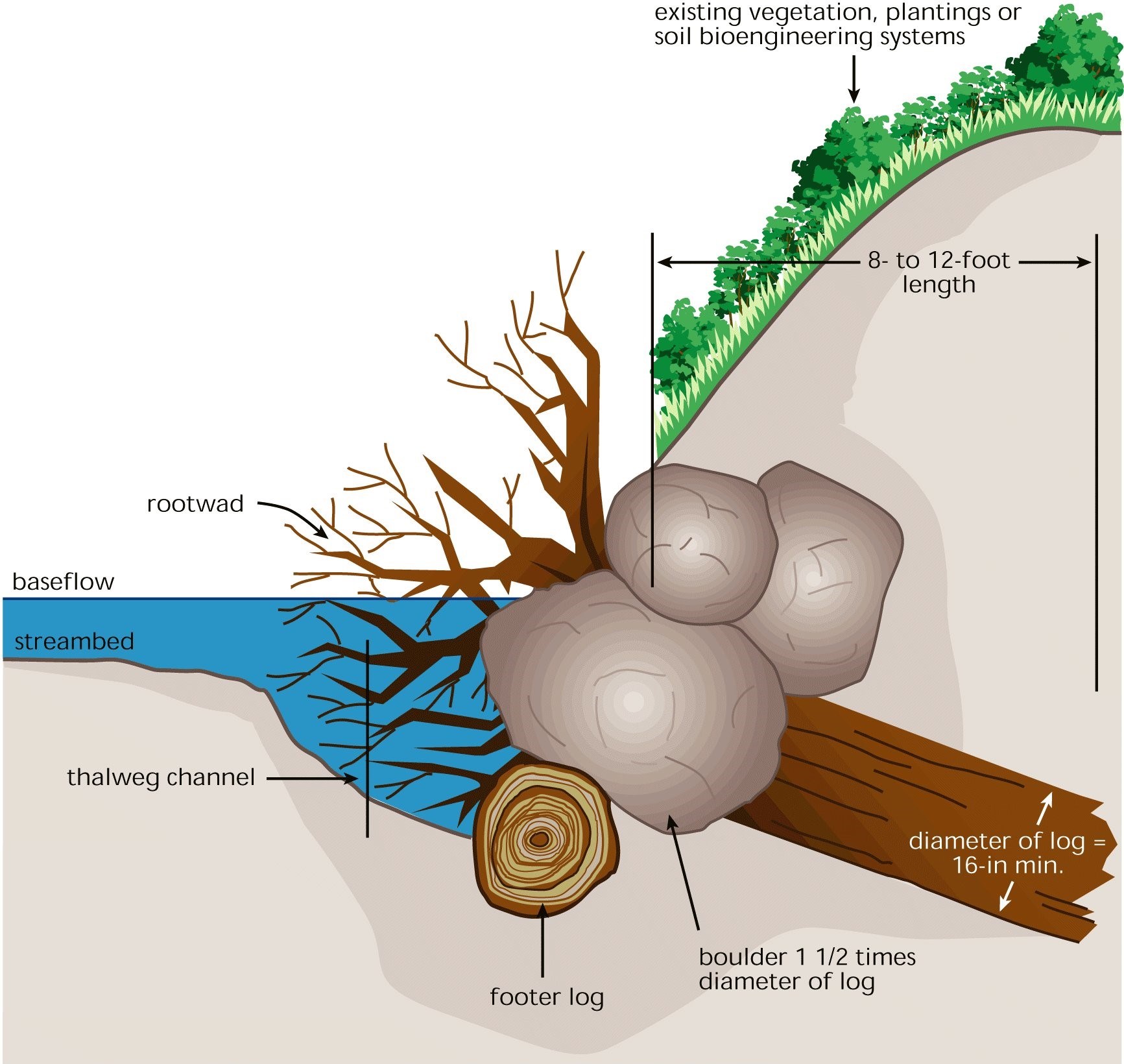Log, Rootwad & Boulder Revetments

Description
These revetments are systems composed of logs, rootwads, and boulders selectively placed in and on streambanks. These revetments can provide excellent overhead cover, resting areas, shelters for insects and other fish food organisms, substrate for aquatic organisms, and increased stream velocity that results in sediment flushing and deeper scour pools. Several of these combinations are described in Floyd Reynolds (1991), Rosgen (1992) and Berger (1991).
Applicability
- For stabilization and to create instream structures to improve fish rearing and spawning habitat.
- Suited to streams where fish habitat deficiencies exist.
- Should be used in combination with soil bioengineering system or vegetative plantings to stabilize the upper bank and ensure a regenerative source of streambank vegetation.
- This BMP has a narrow range of applications and should only be used based on as assessment by a professional river engineer.
Design Considerations
- Placement is critical with regard to the bankfull elevation and longitudinal profile.
- This type of BMP requires professional design and installation.
- Installation results in bank alteration, requiring permitting under the Massachusetts Wetlands Protection Act.
Effectiveness
- Effective on meandering streams with out-of-bank flow conditions.
- Will tolerate high boundary shear stress if logs and rootwads are well anchored.
- Enhance diversity of riparian corridor when used combination with soil bio-engineering systems.
- Have limited life depending on climate and tree species used.
References
LCSMC and USDA-NRCS. 2002. Streambank and Shoreline Protection Manual. Lake County (Illinois) Stormwater Management Commission and USDA-NRCS. www.co.lake.il.us